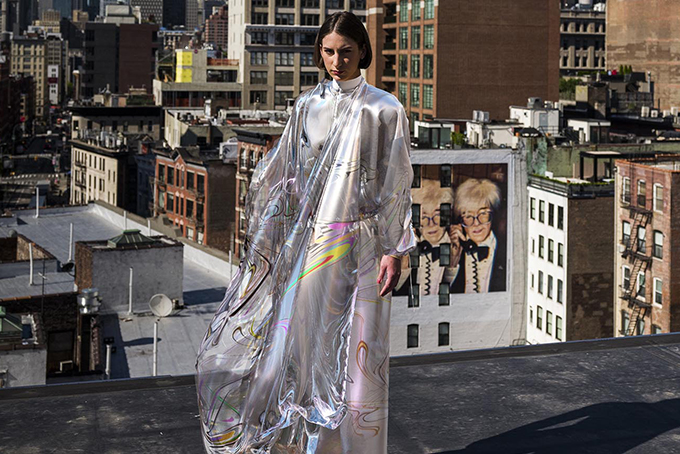The metaverse is much closer to home than one would expect. Think back to the days of lockdown, when an aching need for human connection birthed a new, digital way of life. As a replacement for in-person interactions, the population gravitated to their screens, spending the bulk of their days online—whether they were working and socialising through Zoom or immersing themselves in simulation games like Animal Crossing.
The COVID-19 virus and its consequences have now become endemic. Over time, living in the virtual realm has become second nature, no matter your age. We have developed a dependency on face filters and spent hours customising avatars to achieve our likeness. The next step in achieving full self-expression online? Constructing a virtual wardrobe robust enough to match our sense of style.
Welcome to the new World (Wide Web)
Web 3.0 has brought with it virtual wardrobes, the latest phenomenon to hit the fashion industry. As hyperrealistic digital garments garner ever-growing interest, some of the biggest names in fashion are joining the movement—from Balenciaga’s gamified clothing collection on Fortnite to Dolce&Gabbana’s collaboration with UNXD, creating NFTs accompanied by custom physical pieces.

“As metaverse platforms become increasingly social, the need for digital wardrobes grows,” explains Adriana Hoppenbrouwer-Pereira, co-founder of digital fashion house The Fabricant.
Naysayers may harp on digital fashion’s lack of tangibility as its most important point of difference with its physical counterpart, but there are several other distinctions that are less understood and yet far more remarkable.
Fashion revolution
“The appeal of digital garments transcends the inherent urge to flaunt luxury goods,” says Hoppenbrouwer-Pereira. “The fashion model itself is entirely different in the metaverse.” When it comes to digital fashion, the secondary market has one big advantage: there is no depreciation of quality when items are pre-loved. Where a garment in real life shows evidence of wear and tear—no matter its craftsmanship—a piece of virtual couture can be passed from hand to hand with no sign of use. And as with all NFTs, the resale of digital fashion ensures the original designer still gets a cut of the profits—a beneficial change especially for emerging and independent creators.
“From passive buyers, we are becoming active participants, playing a bigger role in brand stewardship”
In the virtual realm, consumers have heightened autonomy over their purchases. As Hoppenbrouwer-Pereira observes: “The new word for consumers is ‘communities’. From passive buyers, we are becoming active participants, playing a bigger role in brand stewardship. Never before have I seen consumers have such an ability to influence a brand’s road map.”
She points to NFT-attached benefits like tickets to gated fashion shows or a vote in choosing the colour story for a brand’s upcoming collection. “This is only the tip of the iceberg for what the fashion metaverse has in store,” says Hoppenbrouwer-Pereira. “In the future, we may even see super-powered clothing that give virtual avatars special capabilities.”
Breaking the fourth wall
Like many, pandemic-induced introspection led Hoppenbrouwer-Pereira to the conclusion that she barely made use of 30 percent of her wardrobe. “This realisation opened me up to the option of merging my physical wardrobe with a digital one, bridging the gap between two worlds.”
With two teenage daughters who have grown up in a virtual-first environment, Hoppenbrouwer-Pereira knows that the blurring of lines between our real and virtual selves has already begun, whether we know it or not. “It started with AR filters on Zoom or even Snapchat. The average person is already fully accustomed to this, so how long before they start experimenting with digital fashion to customise their online appearance?”
Everyday sartorialists may have yet to buy into the allure of digital fashion, but this is changing fast. Most recently, Meta’s new digital clothing store for virtual avatars—supported by top luxury fashion houses—made waves, cementing virtual fashion as a new arm of the industry that is here to stay.
For Hoppenbrouwer-Pereira, this is a move in a vein she has long seen coming. The Fabricant’s newest digital launch is a glamorous pair of hyperreal earrings, an easy way to make a fashion statement with just a click of a button. “When you’re spending so much of your life online, digital fashion makes self-expression that much easier,” she says. “Ultimately, that is the element that people have continued to search for, whether online or off.”
For more stories like this, subscribe to Vogue Singapore.





